Solvent traps are designed to catch cleaning fluids and patches that come out the business end of your barrel…if you’re one of those weird people who actually cleans his or her firearms. While that rarely describes me, I got my hands on two of JK Armament’s JK 155 MST kits from Silencer Shop and began the process of legally remanufacturing them into firearm silencers.
Seen above is both a 155R, rifle kit, and a 155P, pistol kit. Plus drill jig kits in 9mm and .30 cal.
Rifle cups have the straight, 60-degree walls (seen at far right in the photo above) while pistol cups have the radial, curved walls (seen at center in the photo above). Should you also remanufacture your JK MST into a Form 1 suppressor, these different baffle cup designs are supposed to work better for the gas velocities of either a pistol or a rifle cartridge. As JK sells cups individually, you can also choose to mix-and-match as you please.
In order to manufacture your own NFA item, you must first file an ATF Form 1, pay your $200 tax, and receive approval. It’s a relatively straightforward process, and these days if you use the ATF eForms system it’s taking only about three to six weeks from start to approval. Compared to the nine-or-so months a Form 4 takes (that’s the application used when you transfer an existing NFA item, such as when purchasing one from a dealer), the time savings alone is a huge reason many people decide to build vs. buy.
Since you will be the manufacturer of this new NFA item, you must engrave the required information on it. That includes your manufacturer name that you put on the Form 1, which could be your actual name or the name of your corporation or trust, your relevant city and state (two-letter abbreviation accepted), a model designation, a caliber designation, and a serial number.
With the paperwork out of the way and an approved registration and tax stamp in-hand, it’s time to start drilling. JK’s drill jig kits include the necessary bushings, bodies, and drill bits.
For my pistol suppressor I chose to drill the bore for 9mm, which meant a 25/64-inch drill bit, and for my rifle suppressor I chose to go .30 caliber, for which JK includes a 3/8-inch bit. If I only got a single JK 155 MST I’d probably just bore it for 9mm and call it good, as the extra 0.0156″ of bore diameter isn’t going to make or break the MST’s performance on 300 Blackout, but it’s important for safe use of 9mm.
While one could obviously chuck up the JK jig in a drill press — or just clamp the cups themselves directly in place and use a drill press without a jig at all — I chose to stick with the simple DIY theme of this kit, so I clamped the jig into a bench vise and drilled the cups by hand with a battery-powered drill.
The hardened steel drill jig bushing fit precisely around the drill bit and kept everything nicely aligned. The bit never tried to bite into the bushing, but made easy enough headway on the hard anodized 7075 aluminum cups, which soon became suppressor baffles.
I sprayed some gun lube in while drilling, which helped to keep things cool and progressing smoothly.
About a half-hour later and I had a complete 9mm suppressor drilled and ready to use.
Without cleaning up the holes at all post drilling — I’ll leave that to firing some 300 BLK through my “JKMST” suppressor — I was pleasantly surprised as how crisp, clean, and straight they all were.
It all lines up!
Without a doubt the most difficult part was drilling through the front cap.
That’s a thick slab of 7075 aluminum in there and it took pressure and lubrication and about five times more time and effort than drilling the bore through the cups.
Me, an intellectual, I slid a trash can underneath my bench vise and managed to catch 95% of the shavings. Almost no cleanup is a huge success.
What should I do first? Torture the JKMST on this ridiculously short Black Collar Arms Pork Sword Pistol Space Blaster? Perhaps a 4-inch .308 is asking a bit much of this all-7075 aluminum solvent trap-turned suppressor.
This 12-inch 6.5 Creedmoor Pork Sword Pistol is more realistic (and sends a 147 grain pill 1,150 yards before it goes subsonic, plus shoots 1/4- to 1/2-MOA, 5-round groups), but is still harder use than I would suggest for any muzzle device made of aluminum.
This! This is more like it. A 9mm carbine is the perfect platform for a JK 155 MST turned into a silencer, whether it’s a 16-inch barrel as seen above or it’s a large format pistol with a stubby little barrel. This is a great choice for an aluminum, Form 1 suppressor.
With eight baffles, my JKMST is easily configured for different firearm and ammo combinations. Seen above with a Gemtech booster installed thanks to one of JK Armament’s thread adapters, I’ll absolutely be testing this bad boy on a 9mm handgun.
JK’s mount tube is threaded with the increasingly-common 1.375×24 thread size, which means there are many dozens of compatible muzzle devices, boosters, and adapters available from many different companies. No matter what firearm you might be using a Form 1’d JK MST on, you’ll have zero issues finding multiple mounting solutions available for it.
Should you already own a pistol booster or other silencer mount that you like and want to use on the JK, it’s nearly certain to work with the correct adapter (or no adapter, in many cases).
Turning a solvent trap into a firearm silencer process recap:
• File an ATF Form 1 and pay $200 NFA tax
• Receive Form 1 approval
• Engrave relevant manufacturer information onto the most permanent, least likely to get damaged, necessary-for-use-of-the-suppressor part of the to-be suppressor. You can also do this prior to the Form 1 process if you so choose.
• Drill the bore hole through each of the cups and the front cap, which JK Armament makes amazingly simple with their drill jig kits and components.
That’s it for now. Soon I’ll be hitting the range with both my JK 155P MST and JK 155R MST, both of which have since been turned into JKMST silencers, and will follow up with a review. Expect testing on various 9mms, 300 Blackouts, .22 LRs, and perhaps more.
Find more info about the JK 155 MST kits at Silencer Shop and on JK Armament’s website.



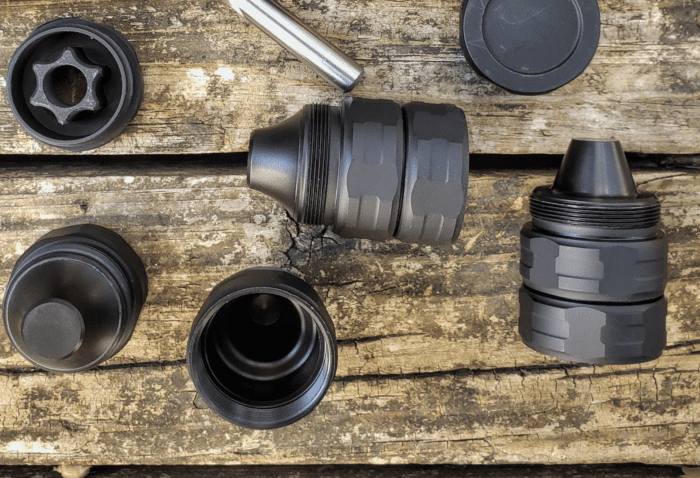

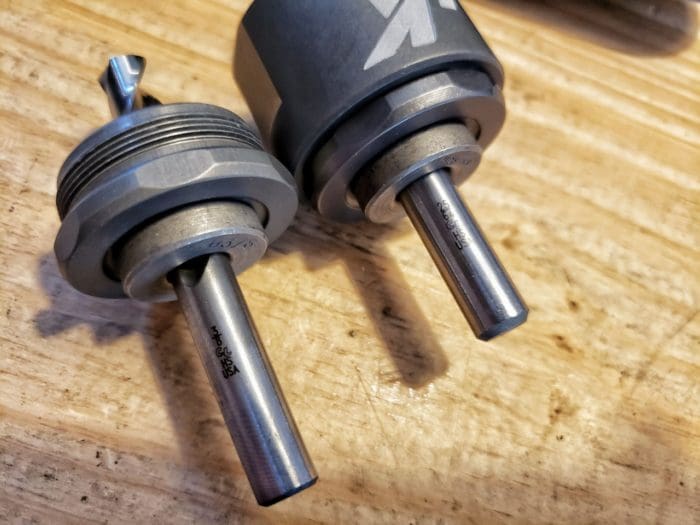

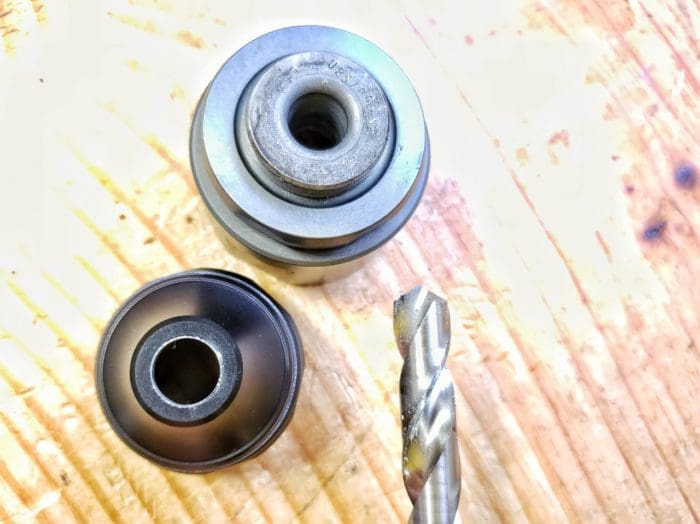
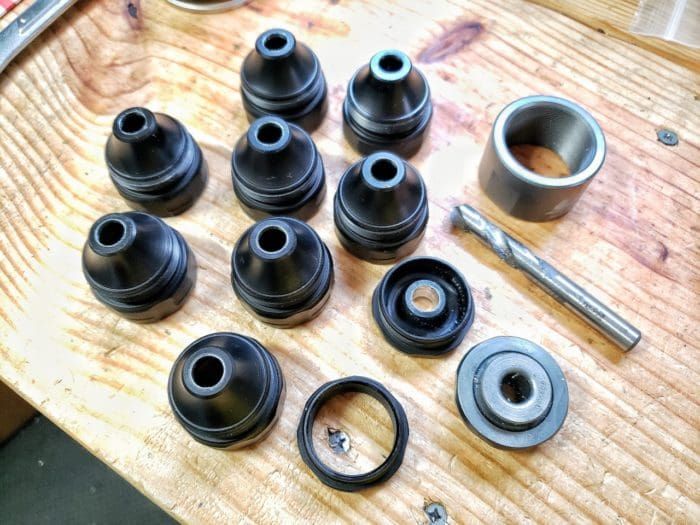




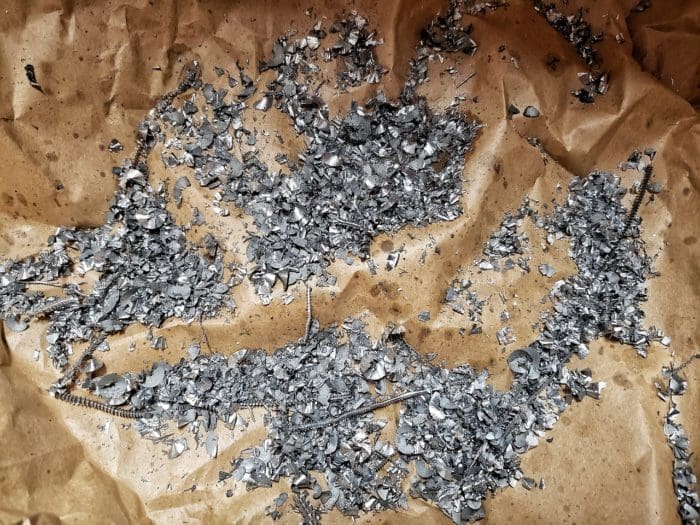

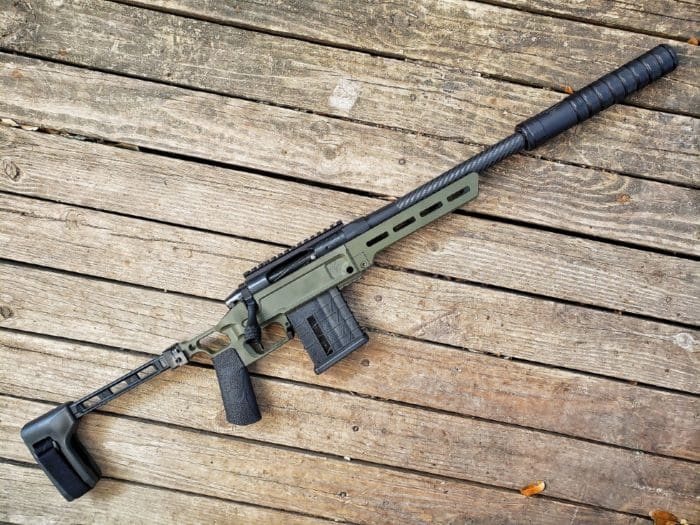
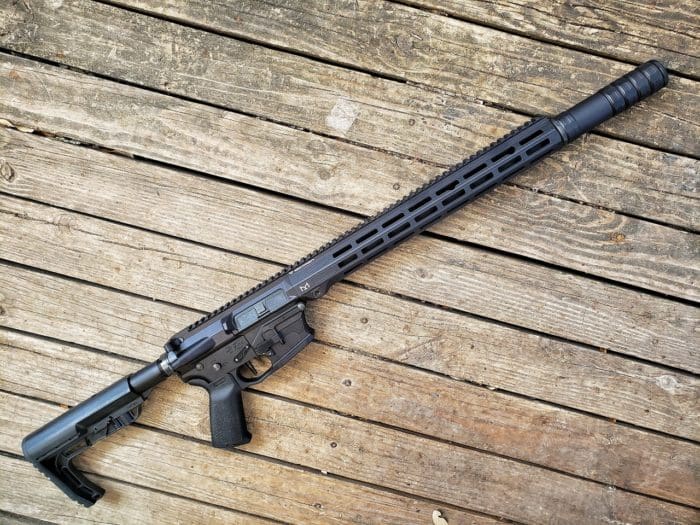
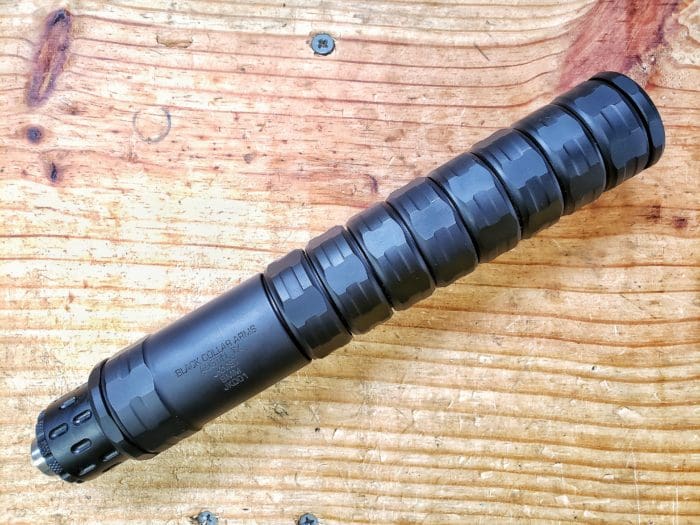
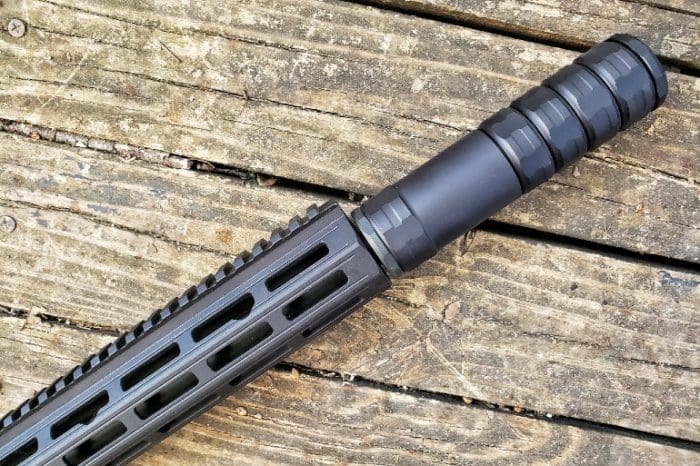



Black Collar Arms Pork Sword Pistol Space Blaster?
What in the unholy fck is that thing?!?
I think I hear baby Jebus weeping.
Soon to be issued to the Space Shuttle Door Gunners.
Space Force!
Ooh-ra-rocket!
Star Wars Blaster.
Neat! I wanna know how well they hold up.
Salient question. Did you file the Form 1 BEFORE you bought the kit? I ask because there were stories of ATF visiting purchasers, seizing the kits and charging with intent to manufacture.
There were Chinese kits out there that were already drilled through, or for other reasons ATF considered them silencers and/or silencer parts. JK has a bit more info on ATF’s view of solvent traps on their website: https://jkarmament.com/atf-legal
That said, you totally CAN file your Form 1 first and I see no harm in doing so.
Thanks very much. I went to their website and am interested.
I can appreciate the modularity of screwing components together and the speed of the Form 1 process, but these kits cost as much or more than normal silencers.
Adub,
I was thinking the same thing.
I figured a kit would cost something like $150 and was planning to file a Form 1 and then buy a kit after receiving my tax stamp.
Now I am having serous second thoughts. At that price it is likely worthwhile for me to file a Form 1 and then, after receiving my tax stamp, setting out to make my own suppressor from scratch.
Adding to my hesitation to buy the kit: it is made of aluminum and not a robust choice for centerfire rifles — meaning it is only wise to use it with rimfire and handgun calibers. When you recognize that limitation, you realize that it is quite expensive and you might as well make your own for rimfire and handgun calibers since that is a much easier task. Bonus: it takes the same amount of time to design my own suppressor whether I make one or two of them — I might as well file two Form 1s at the same time and make two suppressors (one dedicated to rimfire and one dedicated to handgun calibers).
When I went to the website I was startled to see the $879 cost for the kit. No thanks.
Michael,
For reference I thought that I saw some kits for $469. Don’t get me wrong, I think even that is way too high a price for some threaded pieces of aluminum tubing. That is certainly substantially less than $869 though.
Way back when (1/2015 approved) I made a Form 1 for 5.56 and it was less than $100 in parts. 8.5″ carbon steel tube internal threads both ends, steel expansion plugs and aluminum end cap and threaded muzzle adapter.
Then a year later (8/2016 approved) I made one for 30 caliber, same parts, although the carbon steel tube was longer (11.5″). Less than $200 in parts, prices went up. And I used a stainless steel 60° cone for the first baffle.
The famous (or infamous) MagLite suppressor, but not from a flashlight.
Of course there was the $400 for the two Tax Stamps. All done on mail in forms.
Really not seeing why you wouldn’t just buy a suppressor from a reputable company.
Form 1 is a much quicker stamp turn around time from the ATF. I don’t have any NFA goodies, but it is nice to follow.
It took me a YEAR to get my form 4 back for my suppressor. My SBR took 9 months.
Ask yourself how long it’s going to take in a Xiden administration to get paperwork in a bought suppressor.
When will we be required to take our silencers/mufflers off our vehicles or pay $200.00 and apply for permission slip. Seems only logical as the only rational explanation is the Democrats must like a lot of noise.
Nice review. Looking forward to the review of how the JKMST’s sound & hold up in use.
That said, I’m guessing they are darn quiet on your Black Collar Arms Pork Sword Pistol Space Blaster as it does not seem to have a trigger. You just make the ‘pew-pew’ sounds yourself or is that your way of saving money during the current ‘AMMO-geddon’?
“… I’m guessing they are darn quiet …”
That there was pretty funny! You sir or ma’am win the Intertubez this morning.
I already have a couple of expensive titatanium suppressors.
I assume that less weight by the use of exotic materials costs more.
I’d be willing to give up ANY concern about weight to get an ultra cheap silencer.
My sole use case would be mounted on a rifle with the weight supported by bipod.
Make it all of cheap thick steel if need be.
I assume it would be based on a “freeze plug” design.
I’d be interested if there were parts kits for 308 & 223 that were in the $100 range that would hold up.
It can be ugly and bland looking too.
Anybody have links to such a KNOWN GOOD weight-challenged beast?
doesky2,
I am of the EXACT same mindset.
When my personal life calms down a bit, I am probably going to file a Form 1, get my tax stamp, and go about making my own suppressor. As you stated, if it can be made of steel and can be heavy/ugly, it cannot be that hard to make and should be fairly inexpensive whether you make it yourself or buy a legal kit from someone else.
doesky2,
I imagine a serviceable suppressor could be as simple as a thick steel tube cut in half (lengthwise) with slots machined into it to hold commonly available high-strength washers in place and a thread adapter at one end.
The only “challenging” aspect of such a design is how to robustly/securely attach the thread adapter at one end. (A washer close to the other end of the tube would take care of, well, the other end of the contraption.)
Off the top of my head I have not yet thought of a simple way to keep both long halves of the tube robustly/securely fastened together around those washers. That cannot be a difficult task.
Regarding how to keep the long halves of the tube together, I have an easy answer:
Since weight and appearance do not matter, two or three simple clamps like you use to secure a rifle scope’s optical tube inside the scope mount should do the trick.
And those would be exceedingly easy and cheap to manufacture as well. They would be nothing more than semi-circle pieces of steel with through holes in one semi-circle and threaded holes in the other semi-circle which allow you to run screws in and fasten both halves of the semi-circle together around the suppressor tube.
try 2 pieces of steel tube with one just smaller enough to fit inside the other (such as 1″ I.D. and 1″ O.D.). The larger tube should be threaded on both ends. Drill the right size holes for your caliber into 2 threaded caps for your larger tube and screw one on. Weld ( or JB weld) a nut to fit your barrel threads inside the other cap. Cut the smaller tube into 1/2″ lengths. Push a section of smaller tube into the larger, then push in a 1″ fender washer, then another section of tube, and so on. Fill the larger tub this way and put your 2nd cap on the other end.
No clamps, no machining slots, no chance of it exploding when a clamp gives out, and everything is easily available at any hardware store
Oh, I like that! A LOT!
Great idea Fred!
Space/washer design was exactly how Poboy suppressor was made and unfortunately it had dismal reviews and now they dont sell them any more. Plenty of chatter and reviews about it a few years ago.
General advice was to buy YHM turbo for $300 which is $450 nowdays.
The $200 is the whole gating factor. If it was $20 then sure you’d build up an el-cheapo. But throwing away $200 for a rattle trap probably doesn’t make sense.
I was just hoping that there would be a link to proven design that was cheap. Maybe it exists but I havent run across it.
Solvent trap, eh? Looks more like a good way to get arrested.
Steve,
Not if you file your Form 1 and receive your tax stamp BEFORE buying the kit.
LOT OF GOOD INFORMATION AND INPUT ON THIS ARTICLE . THANKS YA’ALL
P
This is all very cool, but $800 for a kit!!!???!!!
What does the Jackbooted thugs (ATF) do with the $400 mommy may I pretty please “tax stamp” cash?
Comments are closed.